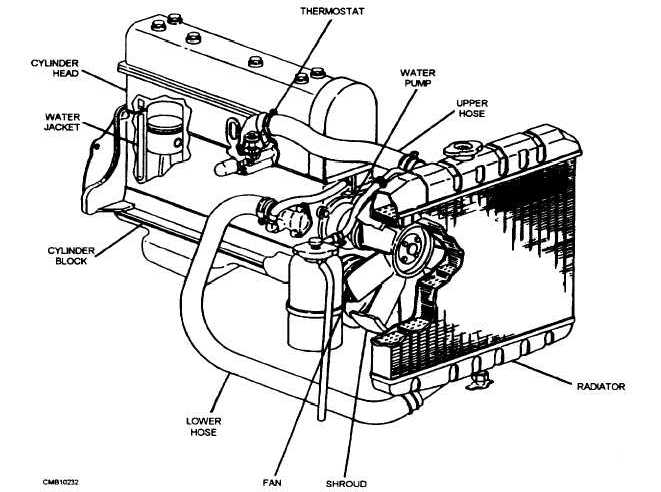careless use of paint. The engine may look good but most paints act as an insulator and hold in heat. In addition to keeping the cooling components clean, you must inspect them each time the engine is serviced. Replace or repair any broken or bent parts. Check the fins for cracks or breaks. When cracks extend into the combustion chamber area, the cylinder barrel must be replaced.
Now that we have studied the simplest method of cooling, let's look at the most common, but also the most complex system.
LIQUID-COOLED SYSTEM
Nearly all multicylinder engines used in automotive, construction, and material-handling equipment use a liquid-cooled system. Any liquid used in this type of system is called a COOLANT.
A simple liquid-cooled system consists of a radiator, coolant pump, piping, fan, thermostat, and a system of water jackets and passages in the cylinder head and block through which the coolant circulates (fig. 6-4). Some vehicles are equipped with a coolant distribution tube inside the cooling passages that directs additional coolant to the points where temperatures are highest. Cooling of the engine parts is accomplished by keeping the coolant circulating and in contact with the metal surfaces to be cooled. The operation of a liquid- cooled system is as follows:
The pump draws the coolant from the bottom of the radiator, forcing the coolant through the water jackets and passages, and ejects it into the upper radiator tank.
The coolant then passes through a set of tubes to the bottom of the radiator from which the cooling cycle begins.
The radiator is situated in front of a fan that is driven either by the water pump or an electric motor. The fan ensures an airflow through the radiator at times when there is no vehicle motion.
The downward flow of coolant through the radiator creates what is known as a thermosiphon action. This simply means that as the coolant is heated in the jackets of the engine, it expands. As it expands, it becomes less dense and therefore

Figure 6-4. - Liquid-cooled engine.
Continue Reading